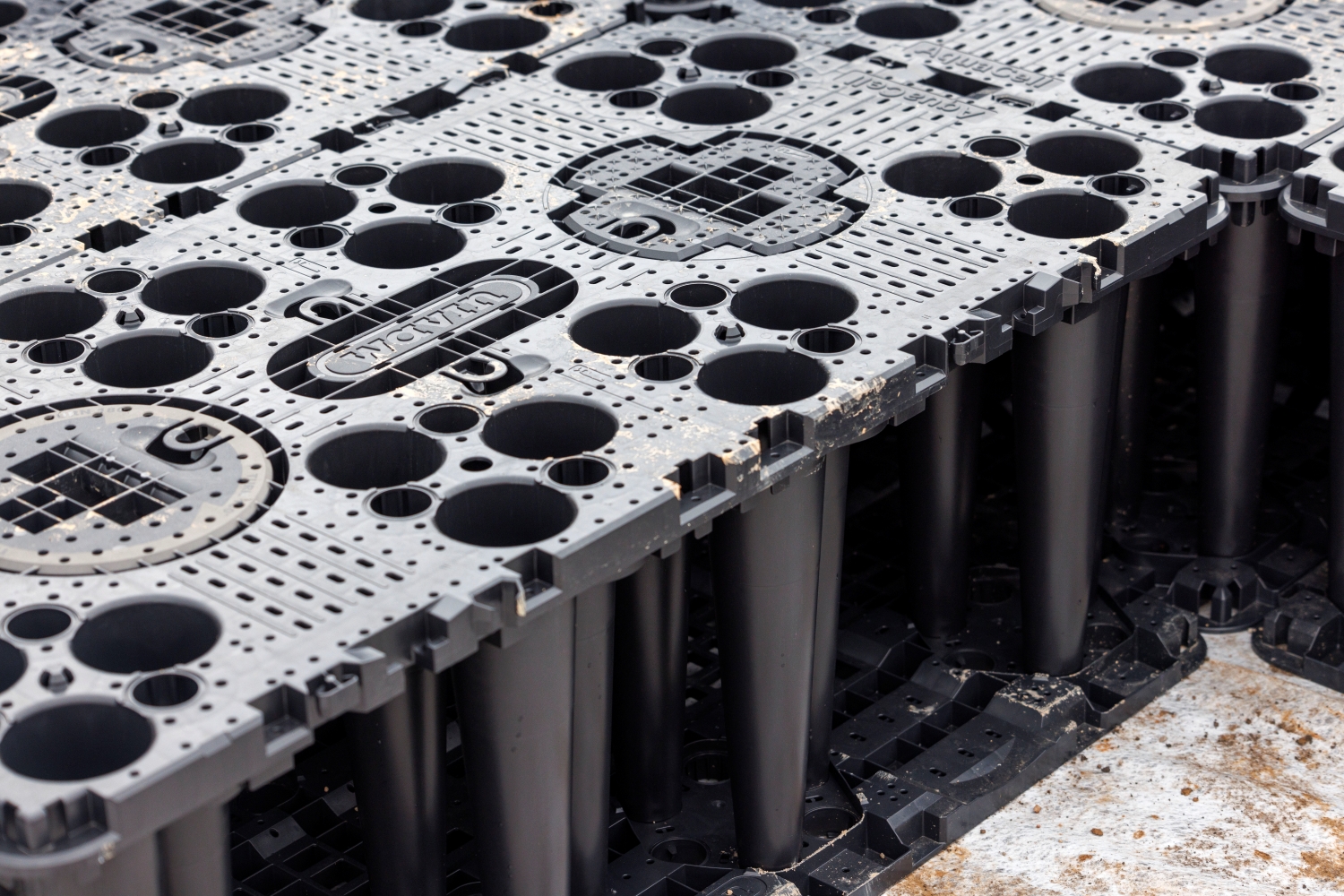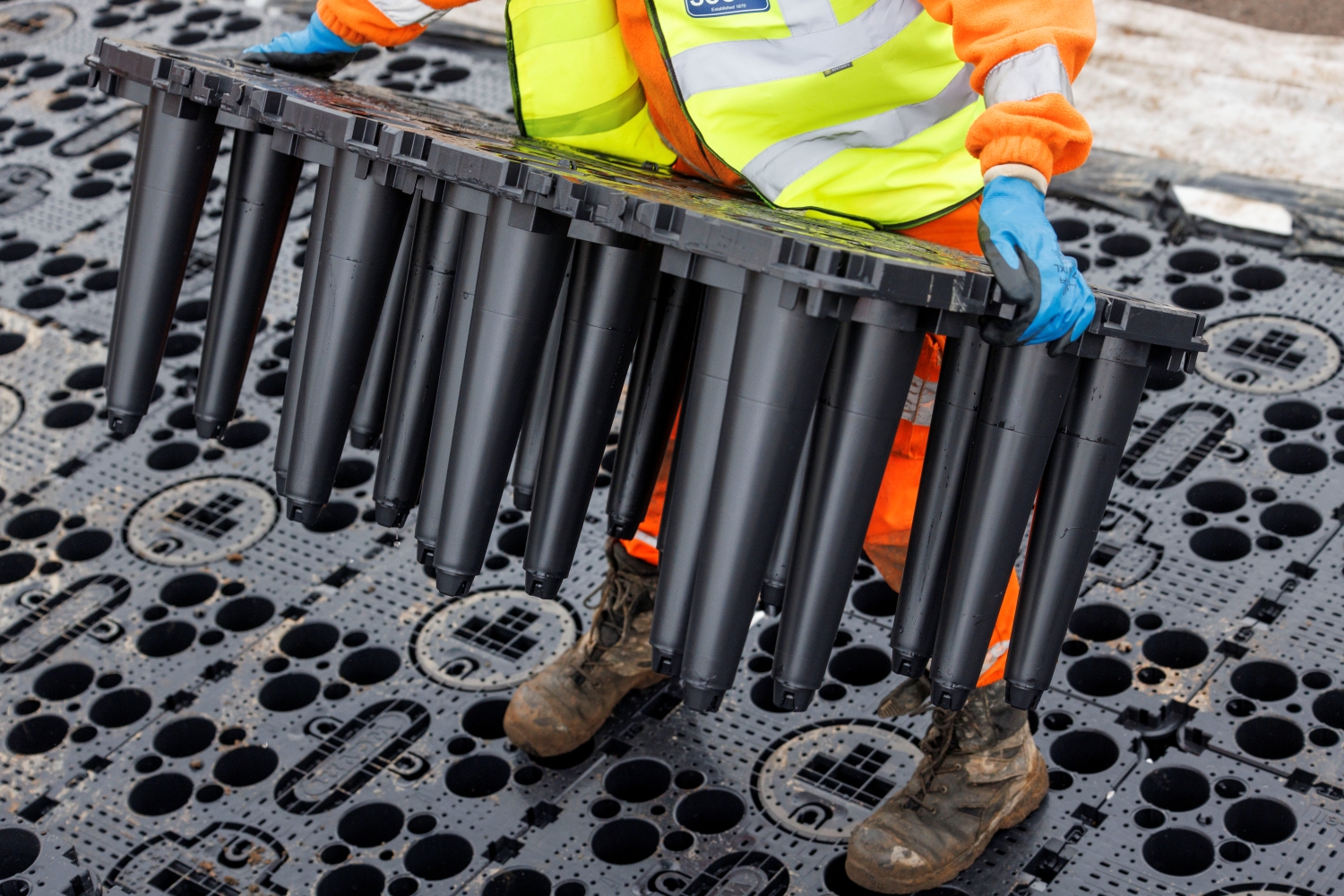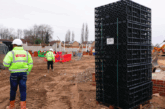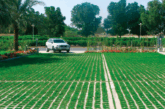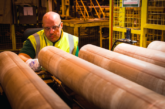
It’s not bye-bye to plastic anytime soon. Martin Lambley, Senior Product Manager for Urban Climate Resilience at Wavin, explains how plastic can still be sustainable, particularly when recycled and paired with green infrastructure.
Plastic has undoubtedly received a bad rap within sustainability discussions, particularly when it comes to virgin plastic and its association with single-use products, irresponsible disposal and pollution. As the global focus on environmental responsibility intensifies, plastic’s reputation suffers. However, its role in sustainability is more nuanced than commonly perceived, while single-use plastics contribute significantly to environmental harm, not all plastic is equal – especially when it comes to utilising recycled materials used in long-term applications.
Here, Martin Lambley, Senior Product Manager for Urban Climate Resilience at Wavin, explains how recycled plastics, paired with green infrastructure are transforming urban infrastructure – making cities stronger and more resilient for the future.
A crucial distinction – single-use vs. long-term applications
Across Europe alone, the construction sector accounts for around 20% of all plastic use – a figure set to rise significantly by 2050. This makes it a critical area for rethinking how materials are used and reused. Recycled plastics offer a clear opportunity to shift the sector toward a more circular, low-waste model, particularly in long-term infrastructure.
It’s important to understand the role of plastic in water management, and to distinguish between single-use plastics and those used for long-term, purpose-driven applications. Single-use plastics – for example those found in single-use straws and bottles – have rightfully earned a reputation as an unnecessary pollutant. But not all plastics are created the same.
Across the built environment, plastics are increasingly being repurposed into materials designed for both longevity and durability. When recycled, plastics can be transformed into high-performance products used in long-term infrastructure applications – a stark contrast to the short-lived nature of single-use items. These durable products, used in surface water management and robust drainage systems, help address the extreme challenges facing urban centres, contributing to more resilient and future-proofed environments.
Recycled plastics and the circular economy
The circular economy – a model built around reusing materials and minimising waste – is now central to sustainable development. Recycled plastics have an important role to play in this system, particularly when used in long-term infrastructure solutions.
For example, recycled plastics are widely used in surface water management systems such as sustainable drainage systems (SuDS), where they play a crucial role in mitigating flood risks and the improvement of water quality. A key example is Wavin’s AquaCell NG attenuation tank. Made up of 100% recycled plastic, it repurposes materials that would otherwise contribute to waste and landfill, turning them into valuable solutions designed to manage excess surface water. At the end of its lifespan, the tank can be fully recycled, supporting a closed-loop system and reinforcing circular economy principles.
Adopting recycled plastics in this way provides a significant opportunity for the built environment to shift towards a more sustainable, circular model. As urban centres continue to grow, integrating recycled materials into infrastructure reduces reliance on virgin or finite resources.
The key role of hybrid solutions
One of the most effective ways to maximise the potential of recycled plastics is through hybrid systems that combine green infrastructure with engineered solutions.
It’s no secret that SuDS are a crucial defence against the growing challenges our urban centres face, such as intense rainfall and flash flooding. Today, SuDS refers to a broad range of solutions which work together to manage surface water sustainably, protecting both infrastructure and the environment.
For developers, the optimal approach is often a hybrid system which blends both engineered and green SuDS together. Green solutions – like swales and ponds – can naturally absorb and filter water, whilst also promoting biodiversity. Meanwhile, engineered elements like attenuation tanks provide controlled water release to effectively mimic the natural water cycle. These engineered solutions like Wavin’s AquaCell NG attenuation tank, made from 100% recycled plastic, offer a prime example of how recycled materials can be incorporated into such systems. These tanks support long-term water management while reinforcing the principles of the circular economy, making them an effective and sustainable choice for urban infrastructure.
Together, these hybrid systems protect infrastructure from flood risks and enhance the surrounding environment, offering a balanced solution for urban resilience.
Evaluating long-term value
Although the upfront cost of recycled plastic products may seem higher than traditional, virgin materials, the long-term benefits outweigh the initial investment. The economic cost of flooding – including property damage, infrastructure loss, and disruptions to local economies – are increasing and often exceed the cost of preventative SuDS. With flooding causing over £2.4 billion in damage annually, investing in these solutions proves far more cost-effective in the long run.
Plastic has long been associated with overconsumption, waste, and pollution. However, by repurposing plastic waste into recycled materials for use in urban infrastructure, we can unlock its potential to strengthen our cities. Recycled plastics, particularly in surface water management systems, offer durable, high-performance solutions that enhance urban resilience, contributing to more sustainable and future-proof environments.
For more information on Wavin’s AquaCell NG, click here.

